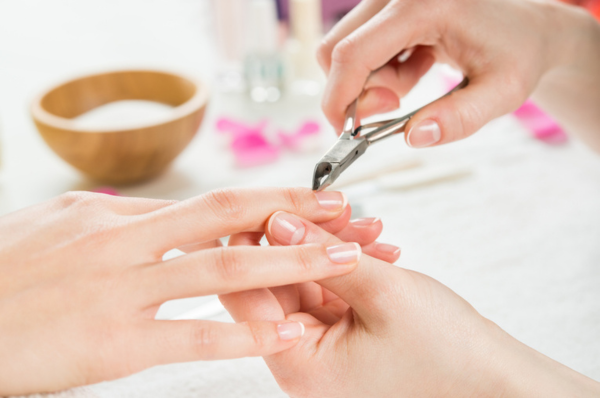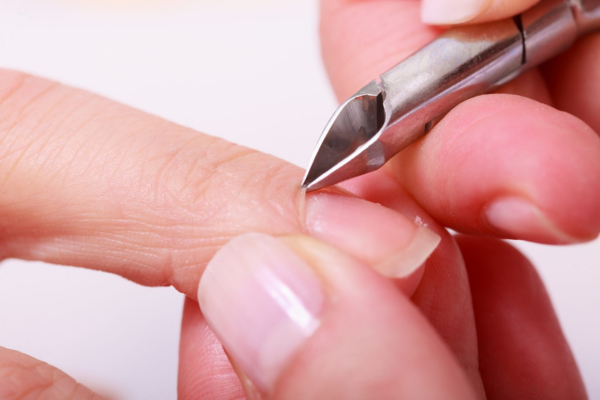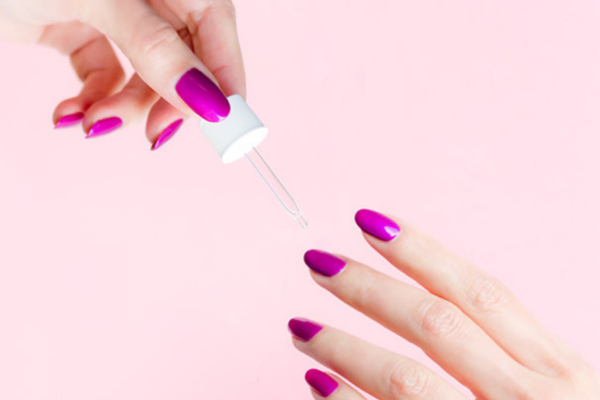Cuticles are frequently overlooked yet essential factors of nail health. deposited at the base of our nails, these thin layers of skin serve a pivotal purpose in guarding the delicate apkins under. Understanding the part of cuticles and learning how to duly watch for them is consummate in maintaining strong, healthy nails. In this comprehensive companion, Nghia Nippers will explore What are cuticles? The function of cuticles, their significance in nail health, and practical tips for effective cuticle care. By probing into the complications of cuticles, we can enhance our overall nail care routine and achieve nails that aren't only beautiful but also flexible.

1. What are cuticles?
Cuticles relate to the thin, transparent subcaste of skin that covers the base of the nails. They serve as a defensive hedge, sealing the space between the nail plate and the girding skin, known as the nail fold or eponychium. Cuticles are composed of dead skin cells and a small quantum of keratin, the same protein set up in nails and hair.
Functionally, cuticles play several important places in maintaining nail health
Barrier Protection Cuticles act as a hedge, guarding the delicate towel beneath the nail against bacteria, fungi, and other pathogens. This helps help infections and maintains the overall health of the nail bed.
Humidity Regulation Cuticles help regulate humidity situations in the nail unit. They seal in humidity to keep the nail doused , precluding it from getting dry and brittle. At the same time, cuticles also help inordinate humidity immersion, which can lead to softening of the nail and implicit issues like fungal infections.

Nail Growth Support Cuticles play a pivotal part in the process of nail growth. They cover the nail matrix, the area where new nail cells are formed, helping to promote healthy nail growth. By creating a hedge between the nail matrix and external factors, cuticles contribute to the integrity and strength of the growing nail.
In summary, cuticles serve as a defensive hedge, regulate humidity situations, and support healthy nail growth. Proper care and conservation of cuticles are essential for overall nail health and appearance.
2. The function of cuticles
The function of cuticles encompasses several important places in maintaining the health and appearance of nails. These are the crucial functions.
One of the primary functions of cuticles is to act as a natural hedge, sealing the area between the nail plate and the girding skin, known as the nail fold or eponychium. This hedge protection helps prevent dangerous bacteria, fungi, and other pathogens from entering the nail bed, reducing the threat of infections similar to paronychia or fungal nail infections.
By creating a defensive seal, cuticles play a pivotal part in securing the delicate apkins beneath the nail, maintaining their health and integrity.
Cuticles also play a vital part in regulating humidity situations within the nail unit.
They help to seal in humidity, precluding the nail from getting exorbitantly dry and brittle, which can lead to cracking, unyoking, and other damage. At the same time, cuticles help to help inordinate humidity immersion, which can beget the nail to come soft and prone to breakage or infection.
Cuticles give support for healthy nail growth by guarding the nail matrix, the area at the base of the nail where new cells are produced. By shielding the nail matrix from external damage and trauma, cuticles promote the continued growth of new nail cells, performing in stronger, healthier nails. Also, cuticles help to maintain the integrity of the nail plate, contributing to its strength and adaptability as it grows.
In summary, the function of cuticles includes furnishing hedge protection against pathogens, regulating humidity situations within the nail, and supporting healthy nail growth. Proper care and conservation of cuticles are essential for conserving the overall health and appearance of nails.
>>> Read more: High quality nail clippers
3. Caring for your cuticles
Caring for your cuticles is an essential part of maintaining healthy nails. Proper cuticle care helps to keep them moisturized, prevents damage, and reduces the threat of infections. There are some tips for minding for your cuticles.
Avoid harsh treatment of your cuticles, similar as picking or smelling, as this can lead to vexation, inflammation, and indeed infection. Rather, gently push back your cuticles after a shower or bath when they're soft. Use a cuticle pusher or a soft kerchief to gently push them back, being careful not to apply too important pressure.
Keep your cuticles doused by applying a nutritional cuticle oil painting or cream regularly.
Massage the oil painting or cream into your cuticles and nails to help moisturize and soften them, promoting healthy growth and precluding blankness and cracking.
Avoid over-trimming or cutting your cuticles exorbitantly, as this can increase the threat of infection and damage to the nail bed. Rather, trim only the loose or grown pieces of cuticle, using a sharp and clean cuticle nipper. Be conservative not to cut too close to the nail bed to avoid injury.

Wear gloves when doing ménage chores or working with harsh chemicals to cover your hands and nails from damage and dehumidification. Apply a defensive hedge, similar to petroleum jelly, around your nails before using nail polish or other drying products to help them from stripping humidity from your cuticles.
Make cuticles a regular part of your nail care routine. Aim to moisturize your cuticles daily and push them back gently after bathing to help them from getting dry and grown.
Schedule regular manicures or nail treatments to keep your cuticles in good condition and address any enterprises instantly.
By following these tips for minding your cuticles, you can help maintain their health and appearance, promoting strong, healthy nails and precluding common issues similar as blankness, cracking, and infections.
4. Addressing common cuticle concerns
Addressing common cuticle enterprises is essential for maintaining overall nail health and appearance. Then are some tips for dealing with three common cuticle issues.
4.1 Dry, cracked cuticles

Having dry and cracked cuticles is one of the worst effects. Not only visually, but they can be relatively painful too! Knowing how to heal your cuticles snappily, literally overnight, will help you to get your nails back to their best. But how do you do so?
The best way to heal your cuticles is to use a combination of specific treatments. The first should be an anti-inflammatory, antibiotic, and pain- revealing cream to reduce the trauma. From there you'll want to use an effective and natural cuticle product to restore a healthy nail terrain. There are actually a number of reasons why your nails( and cuticles) can dry out and come weak and brittle.
Cold rainfall, frequent water exposure, use of harsh chemicals, dry inner heat, dehumidification and a number of other factors all can contribute. While it may appear that it isn't possible to return the strength and appearance to your nails and your cuticles, there are actually a number of effects you can do.
Nghia Nippers recommend that you apply a liberal quantum of nail restorative cream, and do so at the launch and end of each day. During the day, you should apply a nutritional nutrient and mineral-rich cuticle oil painting/ serum and massage this gently. You want to apply products that were designed with a cornucopia of essential and vital composites that promote a healthy nail terrain and nail growth.
4.2 Hangnails
Hangnails, those pesky bits of torn skin around the nails, can be both painful and uncomely. Fortunately, there are ways you can take to help and treat hangnails effectively. originally, avoid the temptation to pick or suck at hangnails, as this can worsen the problem and lead to infection. rather, keep your cuticles well- moisturised to help them from getting dry and brittle, which can contribute to hangnail conformation.
Still, repel the appetite to tear it off with your fritters, If you do develop a hangnail. rather, use clean, sharp cuticle youths to precisely trim the hangnail as close to the base as possible without causing further damage. After trimming, apply a soothing cuticle oil painting or cream to the area to promote mending and help rush.
4.3 Infected cuticles
Infected cuticles can be painful and may bear medical attention to resolve.However, swelling, pain, If you notice signs of infection similar to greenishness. Your healthcare provider can diagnose the infection and define applicable treatment, which may include antibiotics or topical antifungal specifics.

Paronychia( nail infection) generally results from bacteria. Bacteria get into the skin through cuts in the cuticle and the nail fold( the skin around the nail). utmost nail infections get better with antibiotics. Paronychia does n’t generally beget serious health problems. In some cases, the infection lasts a long time or comes back after treatment.
Paronychia is nail inflammation that may affect trauma, vexation or infection. It can affect fingernails or toenails.
Paronychia can develop when bacteria enter broken skin near the cuticle and nail fold, causing an infection. The cuticle is the skin at the base of the nail. The nail fold is where the skin and nail come together.
Healthcare providers treat paronychia with antibiotics to kill the infection. Providers may also drain pus (thick, contagious fluid that builds up around a crack). They may also culture the fluid to see what specific bacteria might be causing the infection.
Occasionally, the infection comes back or symptoms last for weeks habitual paronychia). Habitual paronychia is more generally caused by vexation from occupational or environmental exposures. Less frequently, it may be caused by a habitual bacterial or fungal infection.
In substance, maintaining optimal cuticle health is integral to nurturing strong, seductive nails. By addressing common issues like blankness, hangnails, and infections instantly and diligently as Nghia Nippers guided above, you will know what cuticles are, so you can minimize discomfort and safeguard overall nail well- being. Flash back to keep cuticles doused , avoid harsh chemicals, and instantly address any signs of infection. With harmonious care, you can enjoy the confidence of healthy, beautiful hands and nails.
>>> Related News: Nail clipper set with case













